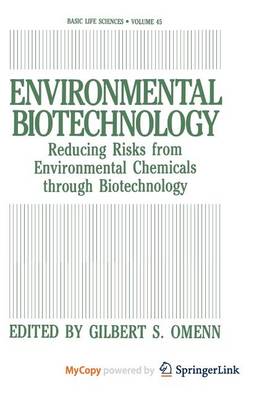Basic Life Sciences
4 primary works
Book 26
Genetic Engineering of Plants
by Tsune Kosuge, Carole Meredith, and Alexander Hollaender
Published 30 April 1983
William C. Taylor Department of Genetics University of California Berkeley, California 94720 It is evident by now that there is a great deal of interest in exploiting the new technologies to genetically engineer new forms of plants. A purpose of this meeting is to assess the possibilities. The papers that follow are concerned with the analysis of single genes or small gene families. We will read about genes found within the nucleus, plastids, and bacteria which are responsible for agri culturally important traits. Given that these genes can be isolated by recombinant DNA techniques, there are two possible strategies for plant engineering. One involves isolating a gene from a cultivated plant, changing it in a specific way and then inserting it back into the same plant where it produces an altered gene product. An example might be changing the amino acid composition of a seed pro tein so as to make the seed a more efficient food source. A second strategy is to isolate a gene from one species and transfer it to another species where it produces a desirable feature. An example might be the transfer of a gene which encodes a more efficient pho tosynthetic enzyme from a wild relative into a cultivated species. There are three technical hurdles which must be overcome for either strategy to work. The gene of interest must be physically isolated.
Book 28
Genetic Control of Environmental Pollutants
by Gilbert S Omenn, Alexander Hollaender, and Claire M. Wilson
Published 29 February 1984
Gilbert S. Omenn Dean, Public Health and Community Medicine University of Washington Seattle, Washington 98195 On behalf of the University of Washington, the City of Seattle, the sponsors and donors, and my co-organizers, I am delighted to welcome all of you to this Conference on Genetic Control of Environ- mental Pollutants. My only regret is that Dr. Alexander Hollaender, who has inspired so many of us as young scientists and stimulated so many trail-blazing conferences in environmental sciences and in gen- etic engineering, is ill and was unable to make the trip to Seattle. He sends his warm good wishes for an outstanding meeting and a fine volume. The purpose of this Conference is to identify and assess strat- egies for more effectively and safely managing wastes and toxic sub- stances in the environment, in part through use of genetically engi- neered microorganisms. There is a sense of desperation in our soci- ety that modern technologies have introduced a bewildering array of potential hazards to human health and to our environment. There is an accompanying sense of frustration that our prodigious basic re- search capabilities and our technological ingenuity have not yielded practical ways to control many pollutants and waste streams, or-- better still--to convert them to useful products.
Book 32
Tissue Culture in Forestry and Agriculture
by Randolph R. Henke, Karen W. Hughes, Milton J. Constantin, Alexander Hollaender, and Claire M. Wilson
Published 30 April 1985
This symposium is the third in a series featuring the propaga tion of higher plants through tissue culture. The first of these symposia, entitled "A Bridge Between Research and Application," was held at the University in 1978 and was published by the Technical Information Center, Department of Energy. The second symposium, on "Emerging Technologies and Strategies," was held in 1980 and pub lished as a special issue of Environmental and Experimental Botany. One of the aims of these symposia was to examine the current state of-the-art in tissue culture technology and to relate this state of technology to practical, applied, and commercial interests. Thus, the third of this series on development and variation focused on embryogenesis in culture: how to recognize it, factors which affect embryogenesis, use of embryogenic systems, etc.; and variability from culture. A special session on woody species again emphasized somatic embryogenesis as a means of rapid propagation. This volume emphasizes tissue culture of forest trees. All of these areas, we feel, are breakthrough areas in which significant progress is expected in the next few years.
Book 45
Gilbert S. Omenn Dean, School of Public Health and Community Medicine University of Washington Seattle, Washington 98195 On behalf of the University of Washington , the City of Seattle, the Steering Committee, and the sponsoring agencies, corporations, and organ izations, I welcome you. \Ve all expect this Conference to stimulate further what is becoming an important application of biotechnology in an area in which our society experiences considerable frustration and gloom: the management of hazardous wastes. It is an all-too-frequent refrain that technology has its benefits and its risks. To many--in the lay pUblic, at least--the damaging notion has taken hold that we are capable of creating problems but are less capable of finding solutions. Chemical streams from industry, agriculture, municipal operations, and household operations have contaminated groundwater, drinking water, and soils, and have undermined the productivity of agri culture and the quality of life. In the meantime, however, we have im proved our quality of life in immeasurable ways through some related developments. The challenge is to continue the enhancements while modifying or preventing the damage.



